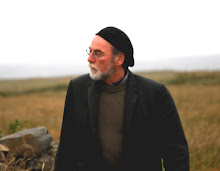The Valley of the Black Pig

The fields and the stones argue amongst themselves about which of their stories is right and best, but all the old stories appear to agree on one thing. Gráinne was a high-born woman who became inconsolable and drowned herself in a little lake up above Feakle after learning she had been conceived of a sunbeam and would never know the world of mortal men.
Being mere mortals, when we pull away at the vines of our limited understanding of the sum of all living things, we still find the moss-covered foundation of Aristotle’s scala naturae, and the fading inscriptions chiselled by the 17th century Lutheran medical student Carl von Linne, who gave us our system of taxonomic nomenclature, which he called the systema naturae. Nowawadays, the whole edifice is crumbling. Entire families of species emerge from the mud, as though summoned by Zeus, or disappear forever, as though extinguished by the impact of a Cretaceous asteriod. Sometimes they vanish out of the known world, and sometimes they vanish owing to the mere publication of papers in such scholarly periodicals as the Journal of Heredity.
But the world of mere mortals can never be a world made up of species that fit neatly into their own genus, family, order, class, phylum, kingdom and domain. The mortal world is also made up of stories. That’s the first thing you notice when you walk through the East Clare hills. A single narrative template is not so easily imposed on the land. Each townland is its own piece of a quilt. Within each townland there are fields. Each field accounts for itself in its own way, in its own stories.
The little field beside the farmhouse is Carrigrua, the Red Crag. Across the boreen from Carrigrua is the Big Hollow. Above the Big Hollow is Hogan’s. Then there’s the tillage field, the old milking shed, and beyond the tillage field is Flanagan’s. Jack Brian’s field is all covered in whitethorns and holly and blackthorns, and it’s also called the Fairy Field because within it there is a rath, which is a ring fort, one of those circles of stones where people used to see faint lights dancing on certain nights of the year. The holy well at Tobar Coolan is for sore eyes, but the one at Ballyquinbeg is for sore bones, and the well at Saint Senan’s is for headaches, and there is blackberry and hazelnut and plum and wild apple among and between everything.
For all its splendid and flourishing and elaborately interconnected profusions of life, the earth is also a tomb, and the dead breathe their stories out of the ground.





0 Comments:
Post a Comment
<< Home